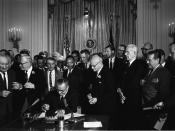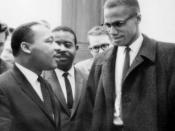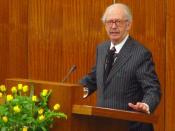Diversity and Diversity Management in the Age of Globalization
Workforce demographics have changed drastically over the last 50 years, and continued changes are expected. Economies are now globally determined and multinational organizations are becoming the norm rather than the exception. Today, most organizations have been or soon will be impacted by these changes. As a result, diversity and diversity management within the organizational sciences is one of the most dynamic areas for theory building and research. Defining diversity requires a consideration of its historical antecedents, which includes the civil rights movement and affirmative action. Managing the changes in the workforces of organizations is the notion of diversity management. During the early era of diversity management, very little theory existed to guide the practitioner's actions to creating programs to manage people. Despite the lack of theory, considerable research regarding the effects of diversity within groups exists, and a myriad of diversity initiatives have been implemented.
Organizationwide implementations have relied on the case study to investigate the outcomes, which have yielded mixed bottom line results. The true impact of diversity and of diversity initiatives is complex, and requires a comprehensive and multidisciplinary approach. The future changes forecast for globalization demand that the effects of diversity and their resulting applications be studied.
DEFINING DIVERSITY MANAGEMENT
Defining diversity management from an organizational perspective requires first a definition of workplace diversity itself. These definitions of diversity have evolved significantly over time. Early efforts defined diversity almost exclusively in terms of race and gender differences in the workforce. In some sense, the terms diversity and race and gender were treated synonymously during the 1990s. Since then, however, the meaning of these terms has expanded. In addition to race and gender, individuals with disabilities, older workers, and foreign-born workers (to name only a few examples)...


